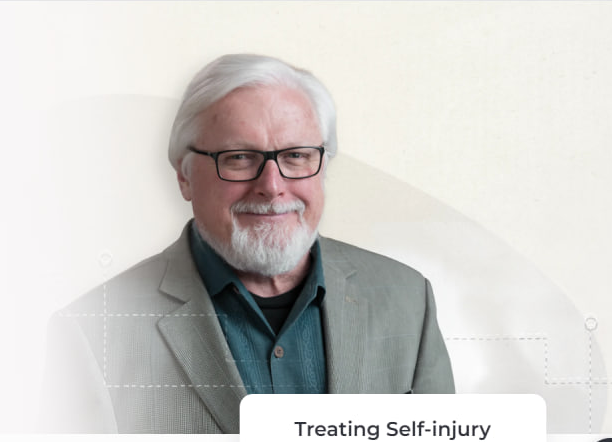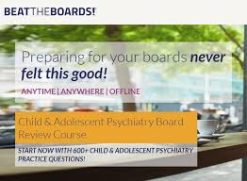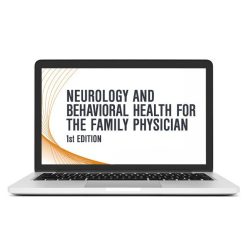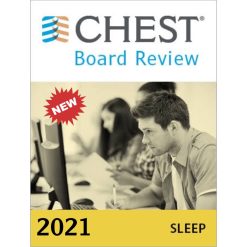psychwire Treating Self-injury 2024
$10,00
Samples for Courses Can be found here : Free Samples Here!
psychwire Treating Self-injury 2024 Non-suicidal self-injury (NSSI) is a common but often misunderstood behavior, particularly in adolescents and young adults. Join global authority Barent Walsh and other leading experts in this insightful online course on best practice treatment of self-injury.
psychwire Treating Self-injury 2024
Treating Self-injury
Non-suicidal self-injury (NSSI) is a common but often misunderstood behavior, particularly in adolescents and young adults. Join global authority Barent Walsh and other leading experts in this insightful online course on best practice treatment of self-injury.
Treating self-injury requires understanding its unique characteristics and how it differs from suicidal behaviors. In this course, you’ll learn about the function, comorbidities and best treatment approaches for self-injury. You’ll be taught how to approach clients with mild to moderate self-injury using best practice CBT, incorporating a range of DBT strategies and interventions. Additionally, you’ll learn how to skillfully refer on severely affected clients and patients for treatments such as full modal DBT.
Full of dependable expert advice, realistic role-plays, revealing case studies and numerous tips and techniques, this course will provide you with new strategies to compassionately help clients successfully move away from self-injury behaviors.
Course Goals
- Identify non-suicidal self-injury (NSSI) and differentiate it from suicidal thoughts and behaviors
- Dispel common myths and misunderstandings about NSSI
- Understand how non-suicidal self-injury works to alleviate emotional discomfort
- Learn and witness tried and true strategies for effectively engaging clients, reducing resistance and increasing willingness to change
- Develop key therapist skills such as how to validate NSSI without condoning it and how to manage risk
- Understand best treatment approaches and recovery from non-suicidal self-injury, including setbacks
- Understand best practices in distraction techniques
- Overcome professional fear and feel competent in treating people with NSSI
- Prioritize therapist self-care and prevention of compassion fatigue
What you’ll learn
Course modules
- Lesson 1 Introduction to Non-suicidal self-injury (NSSI)
- Lesson 2 Welcome to the course
- Lesson 3 Lived experience: introduction
- Lesson 4 Meet the experts
- Lesson 5 What is self-injury?
- Lesson 6 Classification of self-injury
- Lesson 7 Expert interview: the function of self-injury
- Lesson 8 Lived experience: emotions
- Lesson 9 Quiz questions (CE)
- Lesson 1 The function of suicide vs self-injury
- Lesson 2 Pay attention to the method
- Lesson 3 Frequency
- Lesson 4 Means safety
- Lesson 5 Empirical link
- Lesson 6 Lived experience interview: suicide
- Lesson 7 Expert interview: suicide
- Lesson 8 Summary
- Lesson 9 Quiz questions (CE)
- Lesson 1 Lived experience: attention seeking
- Lesson 2 Compassionately dispassionate
- Lesson 3 Respectful curiosity
- Lesson 4 Checklist for direct and indirect self-injury
- Lesson 5 Role-play: compassionate curiosity
- Lesson 6 Using humour
- Lesson 7 Role-play: session with Alicia
- Lesson 8 Lived experience: building relationships
- Lesson 9 Wrap up
- Lesson 10 Expert interview: validation and identity
- Lesson 11 Quiz questions (CE)
- Lesson 1 Introduction to assessment
- Lesson 2 Antecedents one
- Lesson 3 Antecedents two
- Lesson 4 Antecedent example
- Lesson 5 Urge charting
- Lesson 6 Roleplay one: wounds
- Lesson 7 Role play two: wounds
- Lesson 8 Lived experience: scars and wounds
- Lesson 9 Quiz questions (CE)
- Lesson 1 Lived experience: experience of self-injury
- Lesson 2 Does it hurt?
- Lesson 3 Roleplay: does it hurt?
- Lesson 4 Hidden vs exposed
- Lesson 5 Use of tool: time of day
- Lesson 6 Words incised
- Lesson 7 Atypical severe NSSI
- Lesson 8 Role-play: foreign body ingestion part 1
- Lesson 9 Role-play: foreign body ingestion part 2
- Lesson 10 Quiz questions (CE)
- Lesson 1 Expert interview: motivation to change
- Lesson 2 Cyber space
- Lesson 3 Consequences of self-injury
- Lesson 4 Role-play: consequences of self-injury
- Lesson 5 End of assessment
- Lesson 6 Role-play: end of assessment
- Lesson 7 Role-play: short term therapy
- Lesson 8 Intervention story
- Lesson 9 Summary
- Lesson 10 Lived experience: do you want to stop?
- Lesson 11 Quiz questions (CE)
- Lesson 1 Expert interview: self-injury in schools
- Lesson 2 Social contagion
- Lesson 3 Example and group recommendations
- Lesson 4 Role-play: social contagion
- Lesson 5 Reinforcing social contagion
- Lesson 6 Lived experience: schools
- Lesson 1 Lived experience: therapy
- Lesson 2 Treatment
- Lesson 3 SUD scale
- Lesson 4 Distract skills
- Lesson 5 Mindful breathing
- Lesson 6 Role-play: mindful breathing – SUDs
- Lesson 7 Flexibility with mindful breathing
- Lesson 8 Visualization
- Lesson 9 Role-play: visualization
- Lesson 10 Matching skills to clients
- Lesson 11 Role-play: introducing DBT
- Lesson 12 Expert interview: DBT replacement behaviors
- Lesson 13 Lived experience: DBT
- Lesson 14 Quiz questions (CE)
- Lesson 1 Negative replacement behaviors
- Lesson 2 Vigorous exercise
- Lesson 3 Artistic expression
- Lesson 4 Phone apps
- Lesson 5 Reviewing replacement skills
- Lesson 6 Role-play: reviewing replacement skills
- Lesson 7 Relapse medical-amboss.com
- Lesson 8 Expert interview: setbacks and recovery
- Lesson 9 Lived experience: hospitals
- Lesson 10 Expert interview: DBT treatment
- Lesson 11 Role-play: introducing DBT
- Lesson 12 Expert interview: DBT replacement behaviors
- Lesson 13 Lived experience: DBT
- Lesson 14 Quiz questions (CE)
- Lesson 1 Introduction
- Lesson 2 Self-care
- Lesson 3 Relationships
- Lesson 4 Support for practice
- Lesson 5 Provider resilience app
- Lesson 6 Pacing of clients
- Lesson 7 Wrap up
- Lesson 8 Quiz questions (CE)
Related products
Psychiatry
HARVARD MEDICINE
Psychiatry











